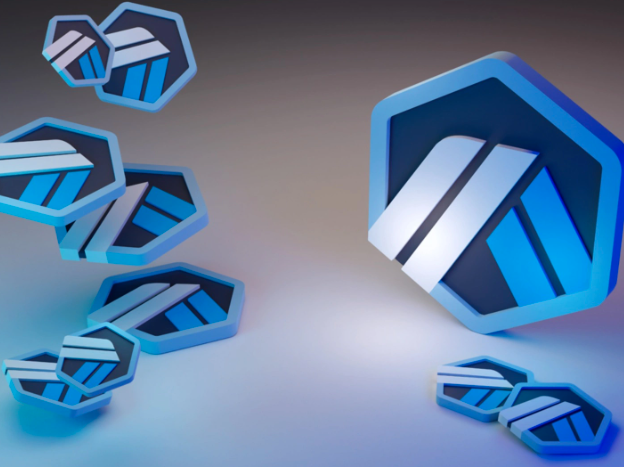Introduction
Ethereum’s scalability has been a pressing concern for developers and users alike. High transaction fees and slow confirmation times have hindered the network’s usability, especially during periods of high demand. To address these issues, layer-2 scaling solutions have been developed, and one of the most promising among them is Arbitrum. Utilizing Optimistic Rollups, Arbitrum offers a scalable, secure, and cost-effective solution to enhance Ethereum’s performance.
What is Arbitrum?
Understanding Layer-2 Scaling Solutions
Layer-2 scaling solutions are designed to handle transactions off the main Ethereum blockchain (layer-1) to improve throughput and reduce fees. These solutions aim to maintain the security and decentralization of the main chain while enhancing performance.
Introduction to Arbitrum
Arbitrum is a layer-2 solution for Ethereum that uses Optimistic Rollups to scale the network. Developed by Offchain Labs, Arbitrum aims to offer fast, low-cost transactions while ensuring security and decentralization. Unlike other layer-2 solutions, Arbitrum provides full compatibility with Ethereum smart contracts, making it easier for developers to migrate their applications without significant changes.
How Optimistic Rollups Work
The Basics of Rollups
Rollups are a type of layer-2 solution that bundle multiple transactions into a single batch, which is then processed off-chain. The results of these transactions are periodically posted to the Ethereum mainnet, reducing the load on the main chain.
Optimistic Rollups Explained
Optimistic Rollups operate on the principle that all transactions are assumed to be valid (“optimistic”) unless proven otherwise. Transactions are executed off-chain, and only the final state is submitted to Ethereum. Validators can challenge any suspicious transactions within a specified window. If a challenge is successful, the invalid transaction is reversed, and the validator is penalized. This system ensures the integrity of the transactions without the need for each transaction to be individually verified on-chain.
Benefits of Arbitrum
Scalability
Arbitrum significantly enhances Ethereum’s scalability by processing transactions off-chain. It can handle thousands of transactions per second, making it ideal for high-demand applications.
Cost Efficiency
One of the primary advantages of Arbitrum is its ability to reduce transaction fees. By batching transactions and processing them off-chain, users can enjoy much lower fees compared to on-chain transactions.
Security
Arbitrum leverages the security of the Ethereum mainnet. While transactions are processed off-chain, any disputes are resolved on-chain, ensuring the security and integrity of the system.
Compatibility
Arbitrum is fully compatible with existing Ethereum smart contracts. Developers can deploy their dApps on Arbitrum with minimal changes, making the transition seamless and efficient.
Arbitrum vs. Other Scaling Solutions
Arbitrum vs. Starknet
While both Arbitrum and Starknet (STRK) aim to scale Ethereum, they use different technologies. Arbitrum uses Optimistic Rollups, which assume transactions are valid unless disputed, while Starknet uses zero-knowledge rollups (zk-rollups), which provide cryptographic proofs for transaction validity. Each has its strengths: Arbitrum offers lower latency and easier implementation, while Starknet provides stronger guarantees of transaction validity.
Arbitrum vs. Sidechains
Sidechains are independent blockchains that run parallel to Ethereum and are connected via a bridge. While sidechains can offer scalability, they often sacrifice security and decentralization. Arbitrum, on the other hand, inherits the security of the Ethereum mainnet, making it a more secure and decentralized option.
Use Cases of Arbitrum
Decentralized Finance (DeFi)
Arbitrum’s high throughput and low fees make it an ideal platform for DeFi applications. By reducing transaction costs and increasing speed, DeFi platforms can offer better user experiences and more complex financial products.
Non-Fungible Tokens (NFTs)
The NFT market has been plagued by high gas fees on Ethereum. Arbitrum can alleviate this issue by significantly lowering the cost of minting, transferring, and trading NFTs, making it more accessible to a broader audience.
Gaming
Blockchain gaming can greatly benefit from Arbitrum’s scalability. High transaction speeds and low costs enable real-time interactions and in-game economies that are not feasible on the Ethereum mainnet.
Supply Chain Management
Arbitrum can improve supply chain management by offering a scalable and cost-effective solution for tracking and verifying the authenticity of products. Businesses can ensure transparency and efficiency in their supply chains using Arbitrum.
How to Integrate Arbitrum
Developing on Arbitrum
Developers can start building on Arbitrum using familiar Ethereum tools. The process involves deploying smart contracts on Arbitrum’s layer-2, which is fully compatible with the Ethereum Virtual Machine (EVM). This compatibility allows developers to use existing development frameworks like Truffle and Hardhat without significant modifications.
Migration from Ethereum
Migrating existing Ethereum dApps to Arbitrum is straightforward due to its compatibility with Ethereum smart contracts. Developers need to redeploy their contracts on Arbitrum and update their front-end to interact with the new network. The Arbitrum bridge facilitates the transfer of assets between Ethereum and Arbitrum, making the migration process seamless.
The Future of Arbitrum
Roadmap and Updates
Offchain Labs has an ambitious roadmap for Arbitrum, focusing on continuous improvements and new features. Upcoming updates aim to enhance performance, security, and user experience, solidifying Arbitrum’s position as a leading layer-2 solution.
Community and Ecosystem Growth
The Arbitrum community is growing rapidly, with numerous projects and developers joining the ecosystem. This growth fosters innovation and accelerates the adoption of Arbitrum, creating a robust and vibrant ecosystem.
Interoperability with Other Blockchains
Interoperability is a key focus for Arbitrum’s future development. By enabling seamless interactions with other blockchain networks, Arbitrum aims to create a more connected and efficient blockchain ecosystem. This includes potential collaborations with other layer-2 solutions and cross-chain platforms.
Challenges and Considerations
User Experience
While Arbitrum offers significant benefits, improving user experience remains a priority. Simplifying the onboarding process and ensuring smooth interactions are crucial for mass adoption.
Security Concerns
Despite leveraging Ethereum’s security, Arbitrum must continuously monitor and address potential vulnerabilities. Regular audits and updates are essential to maintain the system’s integrity and trustworthiness.
Regulatory Landscape
The evolving regulatory landscape for blockchain technology poses challenges for Arbitrum. Ensuring compliance with global regulations while maintaining decentralization and security is a delicate balance that must be achieved.
Conclusion
Arbitrum represents a significant advancement in scaling Ethereum, providing a highly efficient, secure, and cost-effective solution through Optimistic Rollups. Its ability to enhance scalability, reduce costs, and maintain security and decentralization makes it a promising technology for the future of Ethereum. As the ecosystem continues to grow and evolve, Arbitrum is poised to play a pivotal role in the broader blockchain landscape.
Frequently Asked Questions (FAQ)
What is Arbitrum?
Arbitrum is a layer-2 scaling solution for Ethereum that uses Optimistic Rollups to enhance scalability, reduce transaction fees, and maintain security and decentralization.
How do Optimistic Rollups work?
Optimistic Rollups bundle transactions and process them off-chain. Transactions are assumed valid unless disputed within a challenge window. Validators can challenge invalid transactions, ensuring integrity and security.
What are the benefits of Arbitrum?
Arbitrum offers enhanced scalability, cost efficiency, security, and compatibility with existing Ethereum smart contracts. It can handle thousands of transactions per second with reduced fees.
How does Arbitrum compare to other scaling solutions?
Arbitrum uses Optimistic Rollups, offering lower latency and easier implementation compared to zk-rollups like Starknet. It also provides better security and decentralization than sidechains.
What are the use cases of Arbitrum?
Arbitrum is ideal for decentralized finance (DeFi), non-fungible tokens (NFTs), gaming, and supply chain management, offering high throughput and low fees for various applications.
How can developers integrate Arbitrum?
Developers can use familiar Ethereum tools to build on Arbitrum. The migration process involves redeploying smart contracts on Arbitrum’s layer-2 and updating the front-end to interact with the new network.
What challenges does Arbitrum face?
Arbitrum needs to improve user experience, ensure continuous security enhancements, and navigate the evolving regulatory landscape to achieve mass adoption and maintain integrity.
Arbitrum is set to revolutionize Ethereum’s scalability, offering a robust and efficient solution for various applications. As the blockchain ecosystem evolves, Arbitrum will play a crucial role in driving innovation and adoption across different industries.


